The AMD Ryzen 9 7900, Ryzen 7 7700, and Ryzen 5 7600 Review: Zen 4 Efficiency at 65 Watts
by Gavin Bonshor on January 9, 2023 9:00 AM ESTGaming Performance: 720p And Lower
The reason we test games in CPU reviews at lower resolutions such as 720p and below is simple; titles are more likely to be CPU bound than they are GPU bound at lower resolutions. This means there are more frames for the processor to process as opposed to the graphics card doing the majority of the heavy lifting.
There are some variances where some games will still use graphical power, but not as much CPU grunt at these smaller resolutions, and this is where we can show where CPU limitations lie in terms of gaming.
We are using DDR5 memory on the Ryzen 7000 series 65 W SKUs, as well as the other Ryzen 7000 processors tested, at the following settings:
- DDR5-5600B CL46 - Intel 13th Gen
- DDR5-5200 CL44 - Ryzen 7000
- DDR5-4800 (B) CL40 - Intel 12th Gen
All other CPUs such as Ryzen 5000 and 3000 were tested at the relevant JEDEC settings as per the processor's individual memory support with DDR4.
Civilization VI
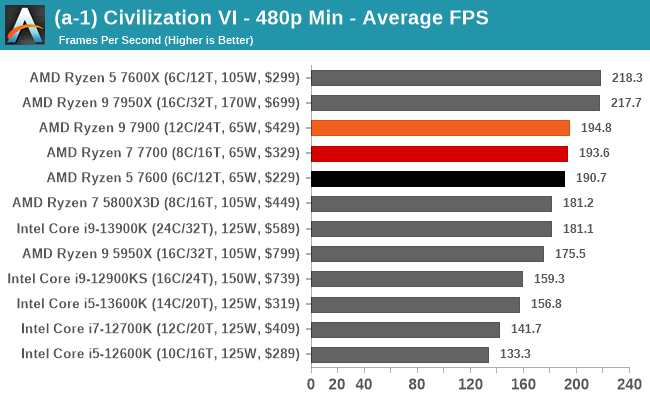
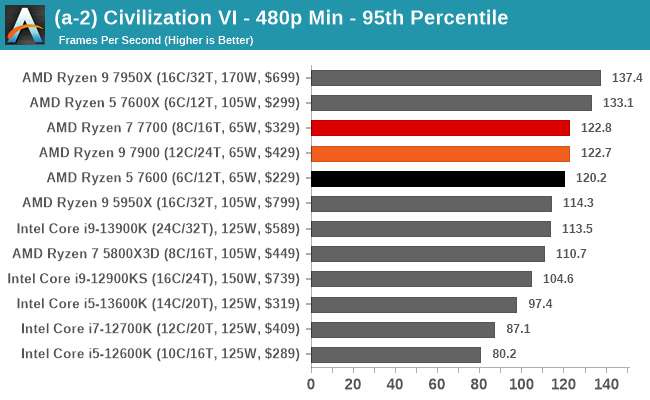
World of Tanks

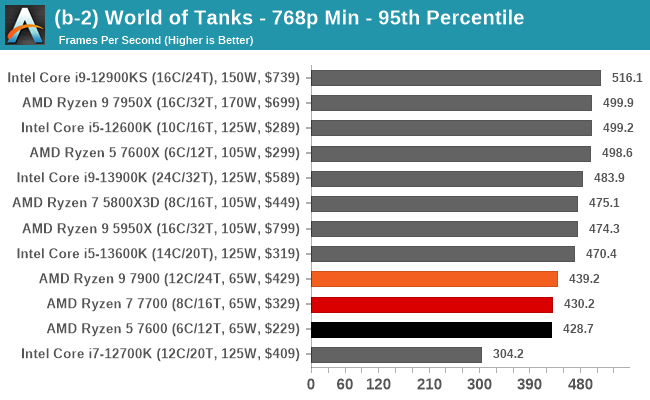
Borderlands 3
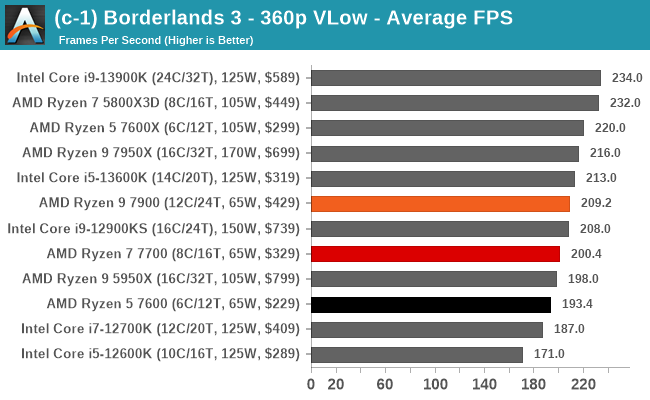
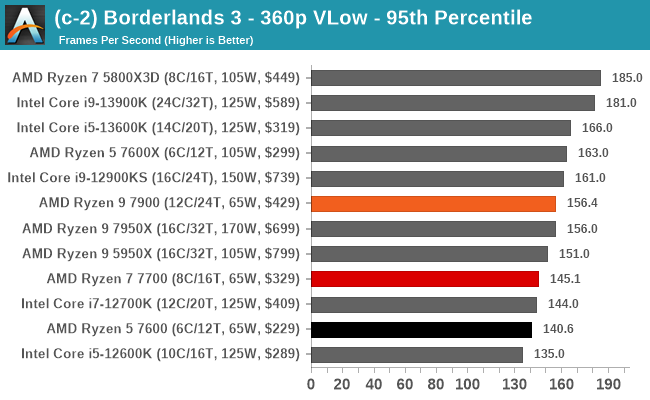
Grand Theft Auto V
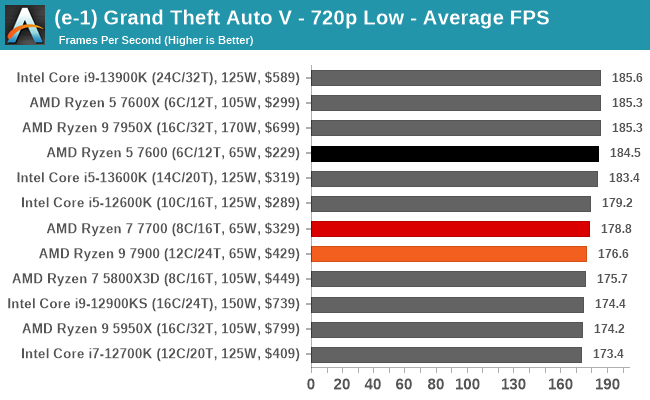
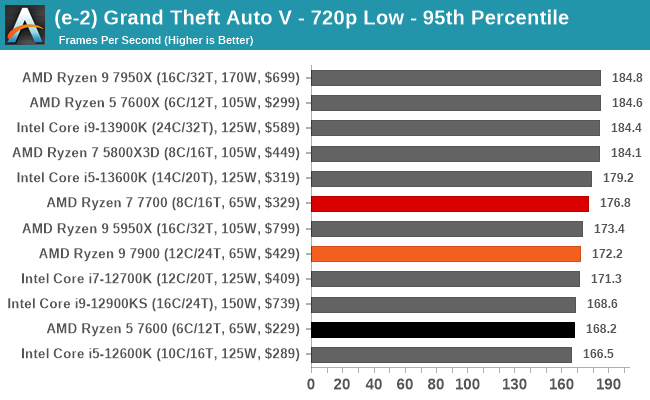
Red Dead Redemption 2
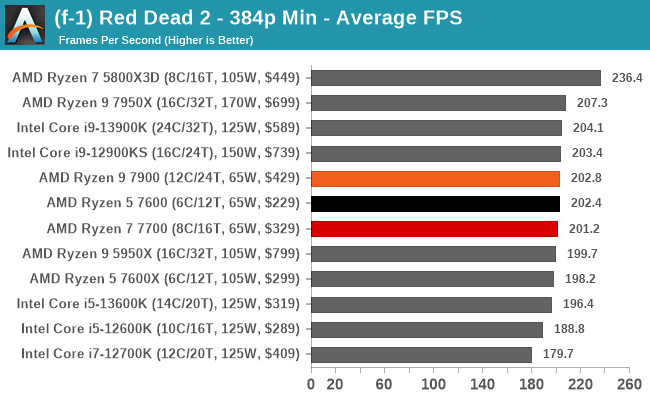
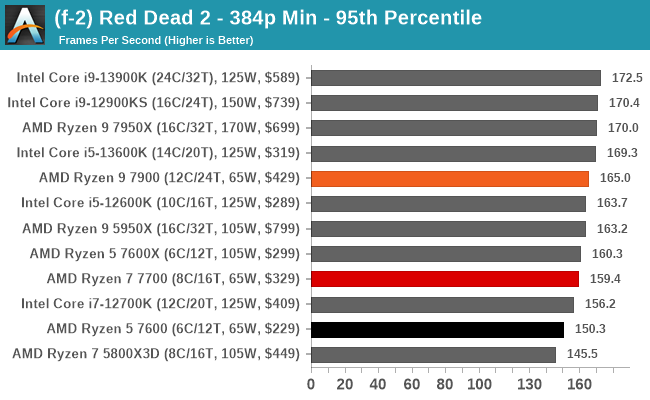
F1 2022
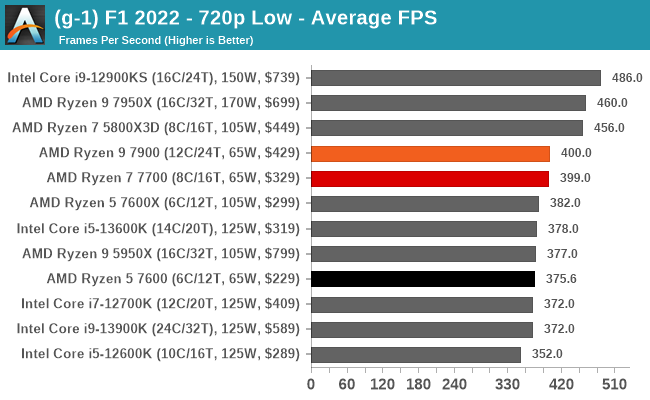
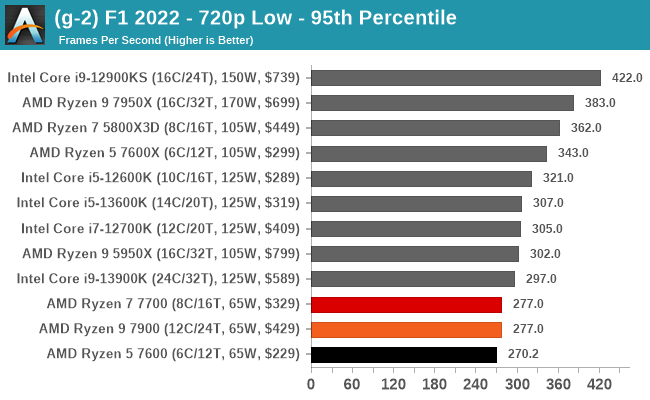
Hitman 3
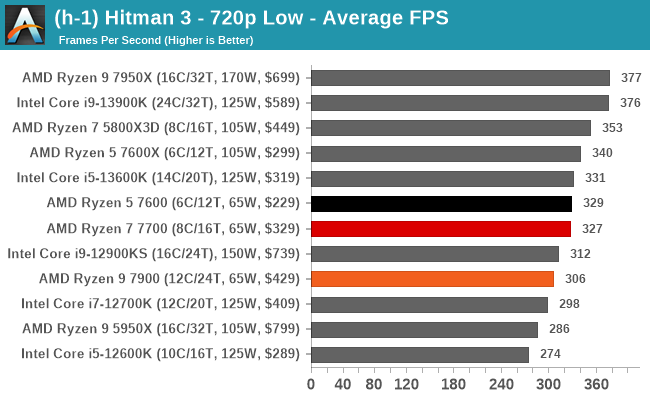
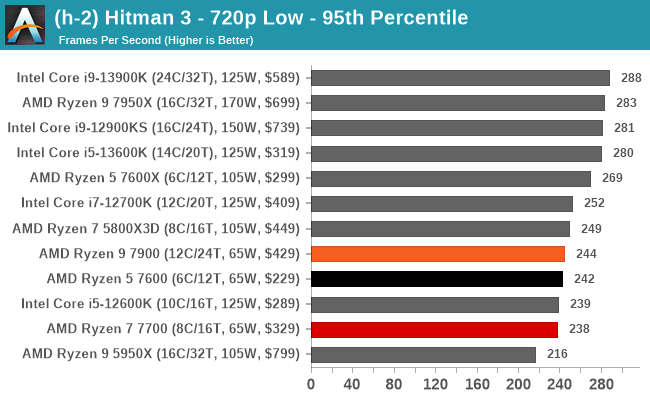
Total War: Warhammer 3
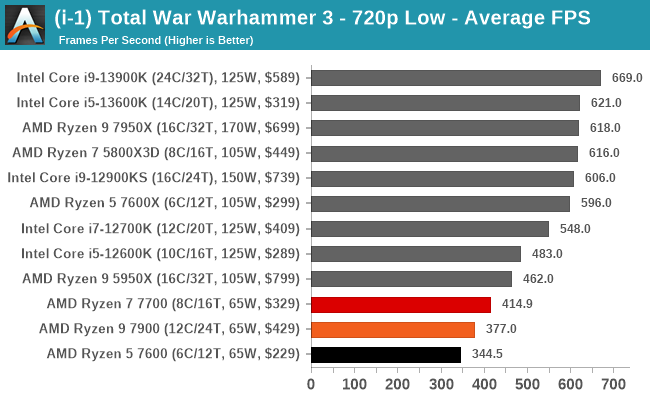
Cyberpunk 2077
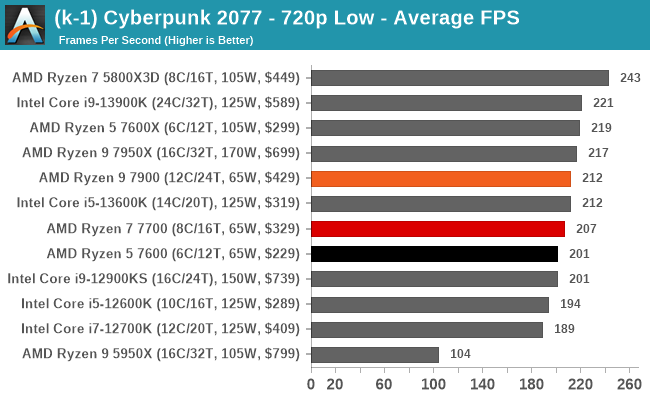

We saw relatively decent performance across the board at very low resolutions of 720p and below, with low to minimal settings selected to bring raw CPU performance into play as opposed to discrete graphics. In most titles, the 65 W Ryzen 7000 CPUs trade blows well compared to other SKUs from both AMD and Intel, despite their power limitations.
The biggest limitation of power came in our Total War Warhammer 3 benchmark, where limited power did seem to handicap performance at 720p more than we've seen in other games so far.










55 Comments
View All Comments
bcortens - Monday, January 9, 2023 - link
My annoyance is mostly that it is misleading - while I understand that companies market these things this way the fact of the matter is that the efficiency is not at 65 Watts, its at 90 Watts. Sure they are spectacularly efficient compared to when running them without power limits but the power limits given by marketing are useless for talking about efficiency because they are just numbers on a slide. AMD could call it TDP 50 Watts and it would be just as meaningful because the real number is so far off.Zucker2k - Monday, January 9, 2023 - link
The 90 watts also doesn't account for iod consumption. So, overall chip consumption is higher than 90 watts.mczak - Monday, January 9, 2023 - link
That's definitely wrong. The PPT number, as the name implies (package power tracking) certainly includes the IOD, it's a limit which applies to the socket. (It does of course not include the B650 (or whatever) chipset but that's of course the same with intel.)Zucker2k - Monday, January 9, 2023 - link
PPT is AMD's version of Intel's PL2 or boosting power level.The power limits reported for the chip and iod are separate.
Gigaplex - Monday, January 9, 2023 - link
PPT is for the whole package. The CCD and IOD do report separate power, but the total package power is also reported and is what is governed by PPT.Gigaplex - Monday, January 9, 2023 - link
PPT does include the IOD, but the TDP is pretty close to the actual power consumption of the CCD.yankeeDDL - Wednesday, January 11, 2023 - link
There's no perfect solution. The gap between what "you think" 65W means in case of AMD, and the reality, is still much smaller than in case of Intel's TDP.Inte'ls 125W CPU can reach well beyond 200W, which is insane (nearly 2x). In case of AMD the difference (explained quite clearly) is much lower (30~40%).
Gigaplex - Monday, January 9, 2023 - link
Another thing to add is that the 65W chips use about 65W for the cores, the rest of the wattage is for the IO.Zucker2k - Tuesday, January 10, 2023 - link
PL2 (boost power level) for Ryzen is tdp x 1.35. So, in this case: 65x1.35 = 87.75. The IOD consumes more than what ll be left here. In any case, the best way to measure these types consumption, from my observations, is to measure from the wall. It usually results in far greater discrepancies than software reports.Atari2600 - Tuesday, January 10, 2023 - link
Source please zucker.